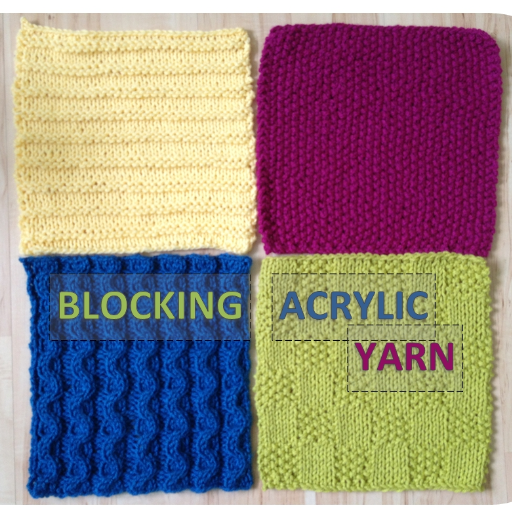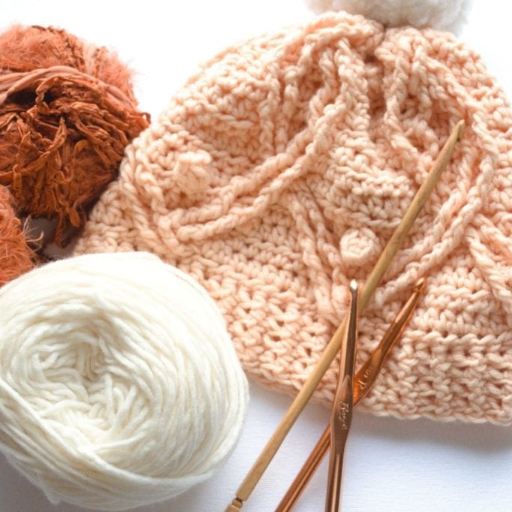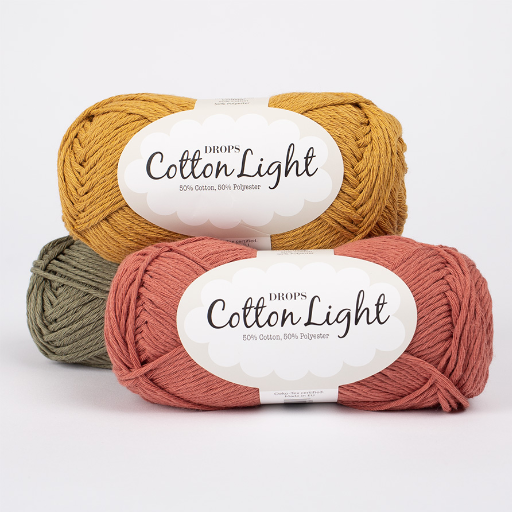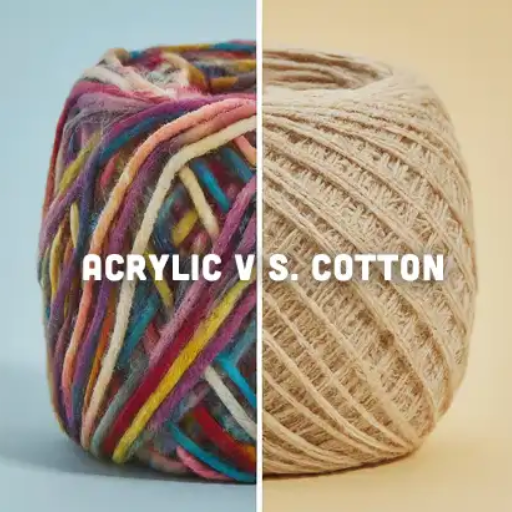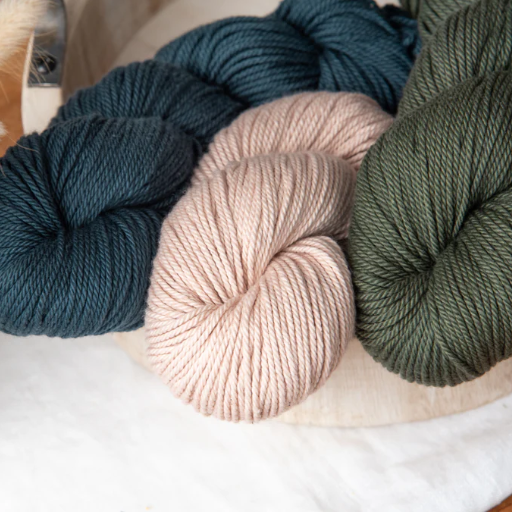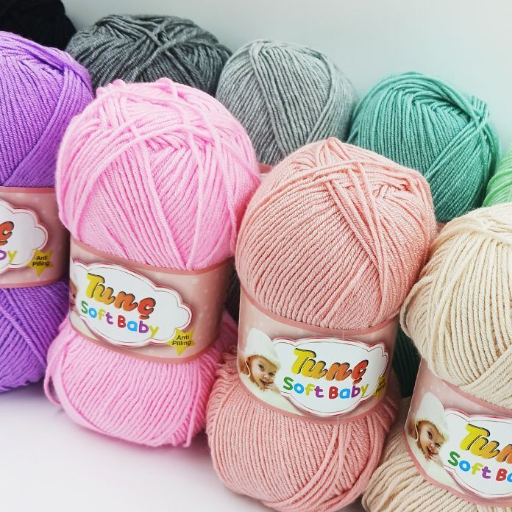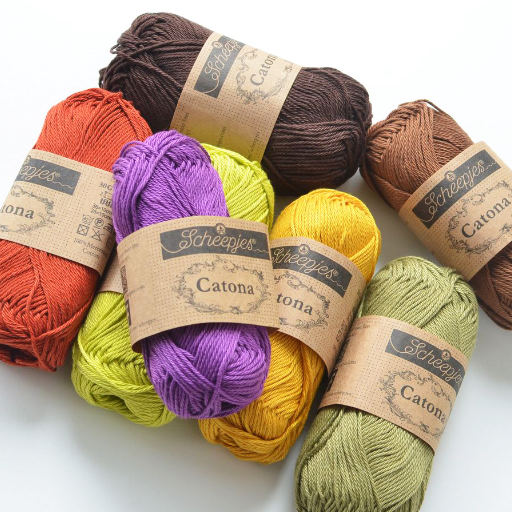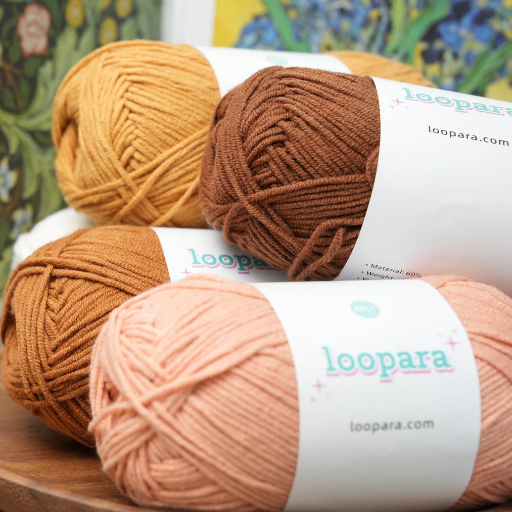Many synthetic fiber options can be used for craftwork or textile work, but there are two that are usually brought to consideration. It will be nothing short of deductive reasoning to consider polyester and acrylic yarn as more standout materials as they are able to present decent attributes and can be used in a number of works ranging from creating light clothes to clothing resilience, warmth and décor. It is, however, essential to know the features that set the two distinctively identified options apart so that we might know which one will be appropriate for our needs. This study occurs in this research field, focusing on the properties, the advantages, and the disadvantages of the above-mentioned fibers, even discussing their predisposing factors in application. Whether you care more about robustness or versatility, or think more of its economy facet, then this is the guide that will enable you to make a conscious decision regarding the most suitable type of synthetic fibre for your next project, hence lack of confusion about the same.
What’s the Difference Between Polyester and Acrylic Yarn?
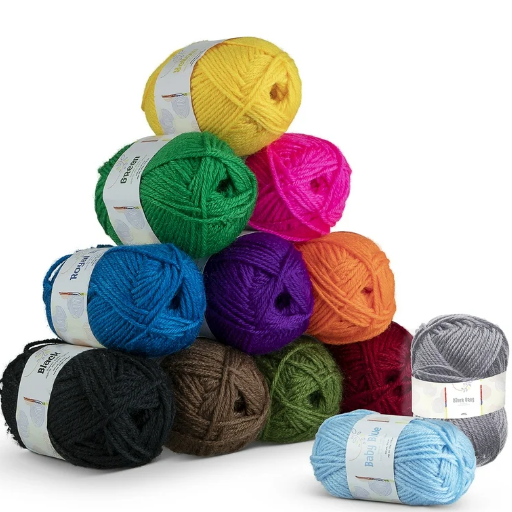
Polyester yarn is predominantly composed of petroleum-based goods, as opposed to other acrylic alternatives. Polyester is an extremely robust fibre with limited deformation and stretching abilities, an ideal choice for durable cloth — more so if the Jacket is to be used outdoors or on workwear. This is in contrast to acrylic yarns which are composed of polyacrylonitrile and known for their plushness and semblance to wool on the other hand. It is more cossetting and provides better insulation thus, it is used most commonly in snuggly clothing items such as scarves, wraps and shawls, marshmallow-like baby wraps or comforters even more often. It is loved less by some because it is less hardy than polyester and more prone to pilling than the synthetic material. However, in all these features, you will definitely find the one best equipped in meeting your particular needs of the day, whether in durability, even woven texture, or appropriate for under-explored climates.
Understanding Polyester Yarn
Polyester yarn is a synthetic substance derived from polymers, e.g., polyethylene terephthalate (PET), that is appreciated because of its firmness, elasticity, and usefulness. With the advent of the process for making polyester yarn, there have been many improvements in the productivity, where it can be made in different finishes and textures, which can serve different purposes, from clothing to industrial use. This yarn incorporates excellent elasticity and is resistant to shrinking, losing its shape and stretching, so it can be used in the production of textiles where durability and maintenance are important aspects. Further, because wicking is difficult, this particular yarn is more suitable for use in sportswear since it helps in the removal of moisture from the body. Unlike any other textile, a greater amount of the existing polyester [PET] intermediates and their several biodegradable grades are presented as project sustainability enhancing factors. Some of these possibilities and qualitatively viable traits make it possible with ease to bracket polyester as a principal modern weave
Exploring Acrylic Yarn
Acrylic yarn is a man-made fiber that is predominantly made from acrylonitrile, a polymer that is obtained either from petroleum or natural gas. This yarn, acrylic, appeals to the masses by virtue of its perception in terms of cost, along with ease of use. Since it is available in a range of weights, worked-up items can be lighter and more comfortable than those done with the bulky ones. Although it has a number of disadvantages, which include the easy loss of fibers and therefore short life of the garment, the spandex fibers still remain the most used synthetic fibers.
Innovations in the education sector and more specifically in the production of acrylic fiber have been geared towards making the fiber more biodegradable and improving its thermal characteristics. By improving the inner layer of fabric, and even the outerwear it becomes thermally more set in the body, but at the same time it does not take extra weight or space since pump structures are used inside the fabric. For more health-resistant material, on the opposite side, non-petroleum-based acrylonitrile routes are being researched as well. These modifications are going to be now the niche for the implementation of acrylic yarn once regard in the market shifts to being environmentally conscious.
Key Differences Between Polyester and Acrylic
|
Key Point |
Polyester |
Acrylic |
|---|---|---|
|
Composition |
Synthetic polymer from PET |
Synthetic polymer made from acrylonitrile |
|
Texture |
Smooth and silky |
Soft and wool-like |
|
Durability |
Highly durable and abrasion-resistant |
Durable but less than polyester |
|
Moisture-Wicking Ability |
Excellent moisture-wicking properties |
Moderate moisture-wicking |
|
Warmth |
Limited warmth without insulation |
High warmth, ideal for colder climates |
|
Stretchability |
Minimal stretch |
Moderate stretch |
|
Weight |
Lightweight and breathable |
Lightweight but retains heat better |
|
Color Retention |
Excellent resistance to fading |
Good color retention |
|
Pilling Tendency |
Resistant to pilling |
Higher susceptibility to pilling |
|
Environmental Impact |
Non-biodegradable, derived from petroleum |
Biodegradable alternatives under development |
|
Cost |
Generally affordable |
Slightly more expensive than polyester |
|
Common Uses |
Apparel, upholstery, outdoor gear |
Sweaters, blankets, and knit garments |
|
Care Requirements |
Machine washable, low heat drying |
Hand wash or delicate cycles recommended |
How to Choose Between the Polyester and Acrylic Yarn?
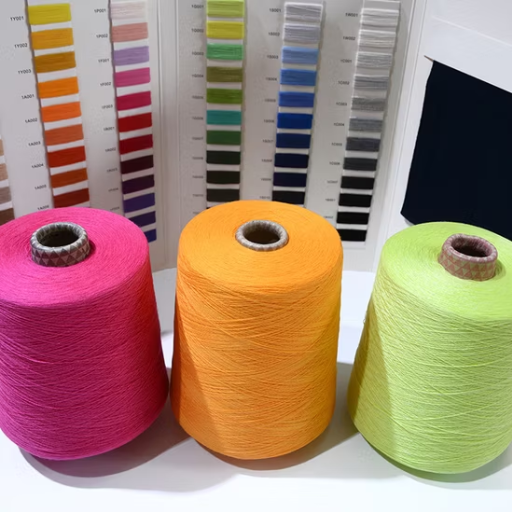
- Durability: The first criterion which is durability is best if you are concerned with the strength and resilience of material to be used for example in making outdoor gear or furniture, in such case, the use of polyester is preferred due to its high resistance to damages from wear and harsh atmosphere.
- Softness: Acrylic yarn possesses a more appealing texture and depth and can be applied on garments and other wisps of the kind.
- Care Requirements: On the other hand, polyester yarn is perfect for regular washes and tumble drying, whereas acrylic would need to be carefully hand washed or at least washed in a machine with delicate settings to keep safe.
- Environmental Impact: Polyester is a petroleum-based non-degradable plastic and some breakthroughs will likely see to the use of bio-degradable acrylic plastics. If one is more concerned with contributing to sustainable practices, as stated earlier, this is definitely of importance.
- Budget: True, in many cases, synthetic fibers are cheaper to produce than other fibers. However, other factors that determine the cost of synthetic fibers cannot be ignored in the cost comparison. It would help to divulge the situation where the cost of polyester is cheaper than that of acrylic, and vice versa.
Factors to Consider When Choosing Yarn
1. Material Composition
The project is all about the yarn used in the project more than the pattern. Common materials include natural fibers such as wool, cotton, and silk as well as synthetic ones such as polyester and acrylic. For instance, wool is an insulating material appropriate for winter garments whereas cotton is a very breathable material and is usually best for summer garments. Blended yarns such as 50% cotton, 50% polyester does not shrink as much as 100% cotton yarn, however care instructions for the blended yarns should be followed as well.
2. Weight and Thickness
Yarn is generally termed as weights which range from lace weight, which is so thin to exceptionally think weights, known as super bulky. These weights have an impact on the look, feel, and standards of the work hair and they also affect the knitting gauge and its speed of completion. As an example, worsted weight yarn is one of the most practical and common choices used for most projects, while fast project using bulky yarn might be desired for scarves or blankets and easy knits.
3. Durability and Strength
Over-washing, often leading to stretching and excessive contraction of the wool, may damage it, especially in knitted garments. The wool blend, for instance, is free from such shortcomings for use in everyday wear and other active types of fashion clothing. On the contrary, soft materials of extreme and sophisticated luxury nature, such as pure silk, or silk/cashmere combing baby yarn, or optimum Merino Alpaca blend, are much less user-friendly and therefore should be restricted to less active usage.
4. Texture and Finish
Depending on the fiber and how it’s past, the yam can be fine and mainly consistent in texture, or rough and irregularly textured or fuzzy. For instance, mercerized cotton gives a crisp look for the stitch structures. The main issue with the textured yarns which, for example, santina and boucle, or eyelash, are how to make them yet still manageable.
5. Color Availability and Dyeing
No project is complete without colors, Ranging from the addition of color in choosing the yarn itself. This can be in a solid color, black and white (referring to one color), tie-dyed, printed with a stamp (hand-printer), or graded in colors. In most cases, colorfastness becomes an issue, particularly where items will be washed from time to time. It is best to always search for colorfast yarns to retain the shade for as long as possible.
Picking out the appropriate yarn for the task at hand can be overwhelming as certain components need to be in place for the project to work either from an aesthetic or a functional point of view. Each of these factors works on its own, together with others to either make or break your creation.
Polyester Yarn for Durability
Polyester yarn enjoys a considerable reputation due to its ability to take on wear and tear, which we all know accompanies most heavy-duty constructions. Such fatigue is primarily caused by the high tensile strength that facilitates undisturbed movements of yarn without submitting to the forces trying to extent it or weaken it. Polyester can also withstand high amounts of friction, which cuts the potential chances of pilling, and or even fraying in case the materials come in contact with them while in use or during washing. Moreover, it is able to hold its shape and structure even under varying conditions as the fabric is more resistant to shrinking and wrinkling if compared to finishes made from naturally occurring fibres. Moisture and mildew is the high level of inherent absorption without being soggy/being a vector for mildew infestation. Given these considerations, it is no wonder that there is so much demand for synthetic yarn in the making of seat covers, raincoats, etc.
Acrylic Yarn for Softness and Comfort
Acrylic fiber can easily be described as one of the most loved fibers for its various characteristics. This includes: the warmth and comfort of garments made out of this fiber, the thickness of the constructed fabric, the ease of maintenance after wearing, the ease of handling, and so forth. Polyester can be described as a superior fiber that has the benefit of imitating the softness, insulating power and artistic possibilities of natural fibers such as wool or cashmere. Aggressively marketed hanging components such as blankets, sweaters, hats and gloves have been effortlessly constructed in line with sophistication and elegance.
What Are the Benefits of Using Polyester Yarn?
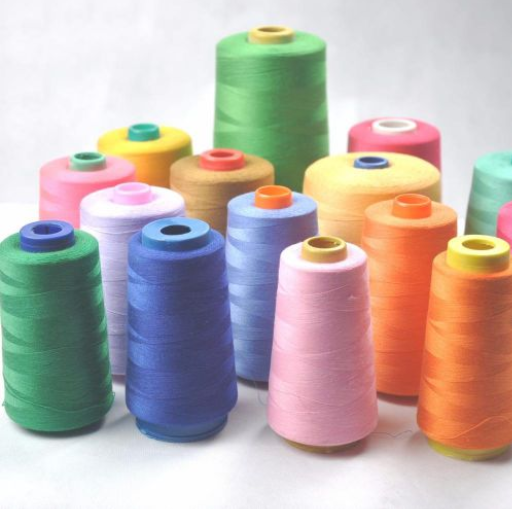
There are many solutions and tools to improve these properties; however, polyester still has fundamental properties that make it exist in applications where other fibers fail. Thanks to its composition, a large number of benefits can be granted to polyester yarn for the applications it has.
- High Durability: Polyester yarn possesses very good properties of resistance toward wearing and tearing. It possesses high strength which allows it to withstand a high degree of force without stress or breaking. Thus, excellent for covering items that are likely to be used often, such as sofas, curtains and certainly sports stuff.
- Moisture Resistance: Perhaps the outbalanced properties endowed upon polyester yarn is the difficulty with which it retains water, mold, mildew, and dirt. Such properties are desirable especially for goods that are meant to be used in environments that are hot and dry, such as carpets or outdoor fabrics.
- Ease of Maintenance: In addition, the advantages of using polyester include its lack of shape change or wrinkling or shrinking. It is no hassle to launder this kind of fabric because not only is it machine-washable, but also due to its rapid drying properties, consumers can easily take care of their goods.
- Cost-Effective: A study about the use of fibers shows that polyester costs less to process as compared to various natural fibers. It is cost-effective as a measure of both production costs to consumers, and it gives out so many performances.
- Versatile Applications: Since polyester is easy to tinker even pierced with their other fibers such as cotton, wool or spandex making the fabric or fabrics with positive functional properties is not a problem. Textile designers and producers rely heavily on such types of fibers in making garment wear as well as household and industrial fabrics.
- Color Retention: When talking about dyed things, the bright color is very fast with polyester fibre because of the man-made solid properties. It becomes nigh impossible for color to fade or wear out due to constant washing or even some outstanding exposure to light while emphasizing very vibrant shades over time.
Each of these attributes underscores polyester yarn’s role as a highly functional and adaptable material, catering to the diverse needs of industries and consumers alike.
Durability and Longevity of Polyester
One of the most critical features of polyester yarn is its extensive strength and wearability, thus making it suitable for rugged applications. Its strength is such that it cannot be easily torn, by reason of fitting and pulling, causing it to stress repeatedly, unlike other materials. Also, the polyester fabric being a man-made material, does not lack structure in the form of shrinking and stretching as well as acquiring cuts by abrasions over a given period of time. The fabric possesses high-performance properties in that it can resist the impact of at least two environmental stressors- wetness (moisture) and UV rays. This, in turn, influences the use of the product since sustaining moisture, UV exposure, or mildew in any form in the material is taken care of. Polyester yarn has well-marked uses in sectors like clothing design, furnishing, and exterior applications manufacturing processes due to its capability to withstand multiple uses and resist its color tendencies to come off after too many washings. Furthermore, there have been improvements in the manufacturing process, especially as is the case with Lycra, where it has become more efficient in designing fabrics that manage moisture and enable quick drying, besides being usable to perform a specific operation.
Breathability and Comfort in Polyester Fabrics
Polyester fabrics, also called performance fabrics due to their durability and low uptake of moisture, experienced a marked improvement along the dimensions of moisture management and overall experience comfort. It is because of this that developments in technology like micro-punching and finishing give polyester fabric that breathability aspect. Also, advanced scientific techniques like moisture-wicking techniques have been introduced in order to help the fabric to absorb sweat from the body to keep it dry and reduce any discomfort. It is thanks to some of these features that their fabrics are used for sportswear, casual wear, including small jackets, trousers, sports shoes, especially in situations where the body’s temperature must be regulated. It is important to note that while it is true that, for example, addition of cotton or elastic to polyester enhances the material’s pleasantness, it was generally harder to include the limitations.
What Are the Advantages of the Acrylic Yarn?
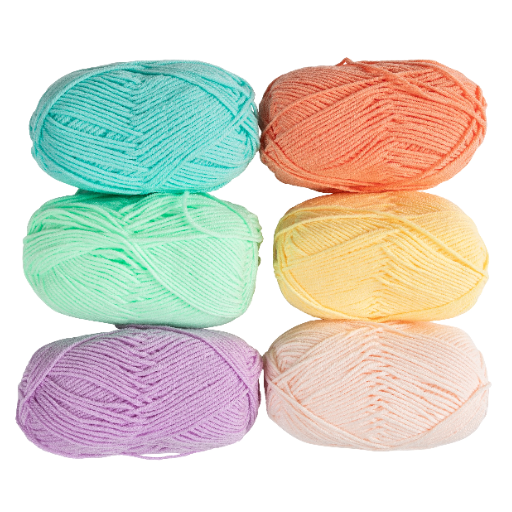
- Lightweight and Soft Texture
Acrylic yarn is easy to handle because of its lightweight and is especially comfortable in various applications. It has the feel of ordinary wool and seems much fragile, especially when touched.
- Outstanding Durability
Acrylic yarn is used in the construction of products and also for the creation of cloth dyes and wears, and lasts for a long period of time as it does not undergo wear and tear. This kind of fabric is also less prone to shrink and pill, which makes it also one of the best fabrics to be used for garments and home textiles that will undergo frequent washing.
- Moisture-Resistant Properties
Polymers are sterile; thus, acrylic for decorative purposes might be useful for regions with high humidity or outdoor spaces. To facilitate fast removal of water from the surfaces, its fast drying ability also aids in making it convenient.
- Color Retention and Vibrancy
Vivid and even deeper colors can be used to dye acrylic yarn, and not only that, they can go through washing and the brightness of the dye is still the same. This type of quality holds importance as bright and beautiful articles like accessories and drapes are fabricated using such expensive raw materials.
- Hypoallergenic
The yarn made out of acrylic is very safe to use as it does not induce allergies to any particulate matter and mild general debility to any natural fiber for example wool. It does not hurt skin to last such apparel or garment.
- Affordability
Since acrylic yarn is cheaper as compared to most natural fibers like wool and silk, it is considered not only for end users but also for producers.
Affordability and Accessibility of Acrylic Yarn
Acrylic yarn has to be manufactured from man-made fibers, which aid in the creation of the product in bulk and at an economic price. This makes it relatively affordable in almost all the available markets and therefore preferable for uses which are driven by cost such as some embroidery designs. Furthermore, the natural, fairly low weight and reluctance to pests and chemicals extends the time of use and reduces other maintenance costs, as customers limit themselves in spending on the proper care and maintenance of their textiles. Industry figures indicate that a large portion of the acrylic yarn market is carved out by products that usually cost much less in comparison to those made from natural fibres (such as wool or cashmere), yet are confined in limb sets like heat and cozy textures. In addition to these, given the easy access of this to the consumers through the online stores and wet markets, it is not surprising that it is so popular among hobbyists and even factories of goods made by yarn may extend their size of production and cover many other lines of work, than knitting or crocheting only.
Vibrant Colors and Easy Care of Acrylic Yarn
Unlike conventional wool, acrylic fibers contain multiple dyes, and so they are specifically used during projects that necessitate deep colored items. It is because these synthetic fibers in acrylic yarn widen the variety of intense yet permanent color hues, rather than faded-like colors which lose their brilliance and appearance just after a short time of use. This is in addition to the fact that, compared to other types of yarn, acrylic yarn requires very little care. As such, it is not prone to shrinking, stretching nor wrinkling after it has been washed and even a machine wash is enough for it – this in turn means that maintaining acrylic yarns is not a tedious job. This artistic exposure that has absolutely no hypocrisy at all has been good to, immediately and always the acrylic yarn dyeing had a putsch which has lured the aficionados-known to years.Sheer comfort and undeniable beauty are articulated through the use of acrylic yarn in the creation of silk neck pieces and summer frocks. Wearing underclothing, hosiery (e.g., stockings or pantyhose) is also a concern. This acrylic-woven clothing enables to keep yourself cool and aeration makes the skin comfortable.
Can You Combine Polyester and Acrylic Yarn in Projects?
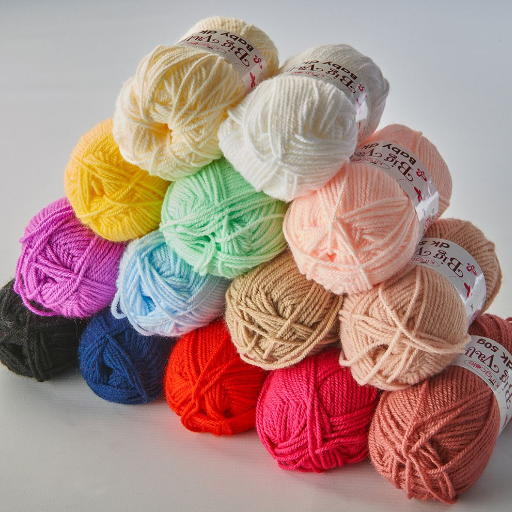
Yes, one can use the nature of polyester and acrylic yarn to craft amazing items as both yarns possess similar qualities. They are both chemically made fibers that have qualities such as color resistance, length and reaction to shrinking. The combination opens up possibilities for double and triple texture yarns, additional strength improvers, and array of colors within a particular shade. However, it is worthwhile to note that consistent yarns are to be used concerning weight and the particular care instruction if the principle of homogeneity or equal strength is to be achieved. In case of combined use of less durable yarn, for instance, blending two different cones, retain the most durable yarn as the determining factor of how to handle that project.
The Benefits of Blending Yarn Types
- Enhanced Strength and Durability
The strength of a material can be enhanced when blended yarns are made. For example, when cotton is combined with polyester, a stronger textile is created rather than working with the same cotton that is simply tear-resistant. Polyester’s resistance to abrasion falls in where else cotton’s gentle and rather stretchy nature makes a comfortable and lasting wear.
- Improved Elasticity and Shape Retention
Where elastic recovery and shape retention matter, natural fibers like wool complemented or mixed with a synthetic component such as additional nylon is usually recommended. This applies notably to outwear such as socks or sportswear where stretching and return are crucial.
- Better Moisture Management
Some formulations, for example wool with synthetic blends, enhance moisture transport. Wool is hygroscopic and warm because it would absorb water vapor, while acrylic for instance is nonhydrophilic hence does not take up any moisture, this makes their production suitable for outdoor apparel and items.
- Texture Customization
Advanced technology enables designers to manipulate the feel and appearance of yarns by introducing different surface interrupted fibers in one yarn construction. For instance, twist silk and cotton together for cloth, and you can be sure that it is going to be not only soft to the skin but is also luxurious in its appearance and richness.
- Cost Efficiency
While there is very good use of this particular type of yarn, the more expensive types may be mixed with the relatively cheaper ones to produce reasonable costs. For example, blending wool and cashmere in equal proportions with wool would soften the color and qualities of cashmere, but at a much lesser cost.
These advantages suggest broad range of application of such yarns due to the ease of their sufficient conversion to diverse purposes in fashion, home decoration and other functional designs. Adjusting fiber mix function allows at the same time to achieve certain performance and aesthetic requirements of the final product design.
Patterns Suitable for Blended Yarn Projects
Blended yarns are particularly suitable for a variety of intricate patterns that benefit from their unique combination of strength, softness, and elasticity. In the specific case of high relief manufactured products, there is the problem of how texture is imparted to the component and feeling of the surface is caused, for instance in purl or steel patterns. In color collection, proportional color blending of Fair Isle and intarsia patterns are leveled off by blends, which avoid creating sharp transitions and risk of pilling in complex areas of the pattern.
Reference Sources
-
Warping Parameters Influence on Warp Yarns Properties: Polyester yarns demonstrated superior tensile strength compared to cotton and polyacrylic. Polyacrylic yarns exhibited the highest elongation percentage, attributed to their natural elasticity and air content.
-
Recycling of Textiles in India: Acrylic and wool are extensively recycled in Panipat, India, into shoddy yarns and blankets. Polyester waste is converted into poly-regenerated fibers and yarns.
-
Review on Dye Removal from Aqueous Solutions: Cationic dyes are used for polyester and acrylic materials, with polyester showing better dye adsorption properties due to its chemical structure.
Frequently Asked Questions (FAQs)
Q: What should I consider when I choose polyester yarn vs acrylic yarn?
A: When choosing between polyester yarn and acrylic yarn, consider factors such as durability, ease of care, and the specific project requirements. Polyester is more durable and quick-drying, while acrylic is often softer and warmer.
Q: What are the main differences between polyester yarn and acrylic yarn?
A: The main differences between polyester yarn and acrylic yarn include their durability, moisture-wicking properties, and breathability. Polyester yarn is more durable and dries quickly, while acrylic yarn is generally softer but less breathable.
Q: How does polyester yarn vs acrylic yarn perform in terms of comfort?
A: Polyester yarn is less breathable than acrylic yarn, making acrylic often more comfortable to wear for clothing items. However, polyester can be suitable for outdoor gear due to its durability.
Q: Is polyester yarn and acrylic yarn suitable for all types of projects?
A: Polyester yarn and acrylic yarn can be suitable for various projects, but the best choice depends on the intended use. For example, polyester is often better for items that require durability, while acrylic is preferred for soft, cozy garments.
Q: Are there any specific properties of polyester that make it better than acrylic?
A: Yes, polyester has properties such as being more durable, quick-drying, and resistant to stretching and shrinking, which can make it a better choice for certain applications compared to acrylic.
Q: Can I use polyester yarn for projects typically made with natural fibers like cotton or wool?
A: Yes, polyester yarn can be used for projects typically made with natural fibers like cotton or wool, especially if you are looking for a yarn that is more durable and quick-drying.
Q: What is the environmental impact of using polyester vs acrylic yarn?
A: Both polyester and acrylic yarns are synthetic and derived from petroleum products, which can have environmental impacts. However, polyester is often considered more sustainable due to its durability and potential for recycling.
Q: For beginners, which is easier to work with: polyester or acrylic?
A: Acrylic yarn is often recommended for beginners as it is softer, easier to handle, and comes in a wide variety of colors. Polyester can be more challenging because it may have a different texture.
Q: How do I care for polyester yarn vs acrylic yarn?
A: Both polyester and acrylic yarns are generally easy to care for. They can usually be machine washed and dried, but always check the label for specific care instructions to ensure longevity.








